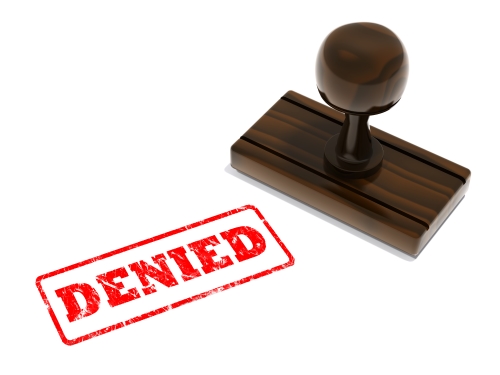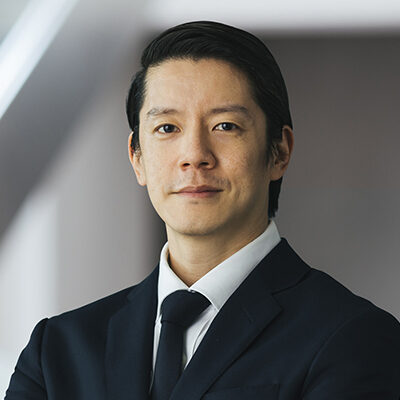“While the PTAB in Advanced Bionics does not expressly address who bears the ultimate burden of proof on the first part of the two-part framework, a patent owner seeking to take advantage of Section 325(d) will have to go first in demonstrating that art or argument relied upon by the petitioner is ‘substantially the same’ as that previously presented.”
 Earlier this year, the Patent Trial and Appeal Board (PTAB) established a two-part framework for applying 35 U.S.C. § 325(d), under which the PTAB may deny institution of an inter partes review (IPR) if substantially the same art or arguments previously were presented to the U.S. Patent and Trademark Office (USPTO). This framework injects a degree of rigor into the PTAB’s discretionary Section 325(d) determinations and suggests ways that IPR participants may more effectively raise or resist Section 325(d) arguments. The framework and its practical implications are discussed below.
Earlier this year, the Patent Trial and Appeal Board (PTAB) established a two-part framework for applying 35 U.S.C. § 325(d), under which the PTAB may deny institution of an inter partes review (IPR) if substantially the same art or arguments previously were presented to the U.S. Patent and Trademark Office (USPTO). This framework injects a degree of rigor into the PTAB’s discretionary Section 325(d) determinations and suggests ways that IPR participants may more effectively raise or resist Section 325(d) arguments. The framework and its practical implications are discussed below.
The Section 325(d) Beckton, Dickinson Factors
Section 325(d) states that, in deciding whether to institute an IPR, “the [Patent Office] Director may take into account whether, and reject the [IPR] petition or request because, the same or substantially the same prior art or arguments previously were presented to the Office.”
In a 2017 precedential decision, Becton, Dickinson & Co. v. B. Braun Melsungen AG, IPR2017-01586, Paper 8 (Dec. 15, 2017), the PTAB enumerated six non-exclusive factors to consider in applying Section 325(d):
(a) the similarities and material differences between the asserted art and the prior art involved during examination;
(b) the cumulative nature of the asserted art and the prior art evaluated during examination;
(c) the extent to which the asserted art was evaluated during examination, including whether the prior art was the basis for rejection;
(d) the extent of overlap between arguments made during examination and the manner in which Petitioner relies on the prior art or Patent Owner distinguishes the prior art;
(e) whether Petitioner has pointed out sufficiently how the Examiner erred in its evaluation of the asserted prior art; and
(f) the extent to which additional evidence and facts presented in the Petition warrant reconsideration of prior art or arguments.
The 2017 Beckton, Dickinson decision, however, did not further elaborate on how those factors should be analyzed.
Advanced Bionic’s Two-Part Framework
That has changed. On March 24, 2020, the PTAB designated as precedential Advanced Bionics, LLC v. MED-EL Elektromedizinische Geräte GmbH, IPR2019-01469, Paper 6 (Feb. 13, 2020), which establishes the following “two-part framework” for deciding whether to apply Section 325(d):
“(1) whether the same or substantially the same art previously was presented to the [Patent] Office or whether the same or substantially the same arguments previously were presented to the Office; and
(2) if either condition of first part of the framework is satisfied, whether the petitioner has demonstrated that the Office erred in a manner material to the patentability of challenged claims.”
According to the Advanced Bionics decision, Beckton, Dickinson factors (a), (b) and (d) map to the first part, and can be used by the PTAB to determine whether “substantially the same” art or argument was previously presented to the Patent Office, whereas Beckton, Dickinson factors (c), (e) and (f) map to the second part, and can be used by the PTAB to determine whether the Patent Office materially erred.
Advanced Bionics further explains that, “[i]f a condition in the first part of the framework is satisfied and the petitioner fails to make a showing of material error, the Director generally will exercise discretion not to institute inter partes review. If reasonable minds can disagree regarding the purported treatment of the art or arguments, it cannot be said that the Office erred in a manner material to patentability.”
Practical Implications
While Advanced Bionics does not expressly address who bears the ultimate burden of proof on the first part of the two-part framework, a patent owner seeking to take advantage of Section 325(d) will have to go first in demonstrating that art or argument relied upon by the petitioner is “substantially the same” as that previously presented. Advanced Bionics, however, offers two points of clarification that may help the patent owner in that regard.
First, though Beckton, Dickinson factors (a), (b) and (d) refer to art and argument raised “during examination,” Advanced Bionics clarifies that “previously presented” art and argument encompasses not only art and argument raised during prosecution of the original patent application, but also art and argument “made of record” by either the Examiner or the patentee during any subsequent reexamination, reissue or post-grant AIA proceedings. Second, if the PTAB determines that substantially the same art previously was presented to the Patent Office, it need not address whether substantially the same argument previously was presented, or vice versa; upon either determination, the focus of the inquiry shifts to whether material error occurred.
Arguably the most significant change wrought by Advanced Bionics is that it makes the putatively “non-exclusive” Becton, Dickinson factor (e) part of the Section 325(d) inquiry: the petitioner bears the burden of demonstrating that the Patent Office materially erred upon a showing that “substantially the same” art or arguments had previously been presented. Moreover, Advance Bionics makes that burden a relatively heavy one: no material error will be found unless “reasonable minds” can differ. However, Advanced Bionics clarifies that a petitioner need not prove material error through any affirmative act of the Patent Office: rather, “if the record of the Office’s previous consideration of the art is not well developed or silent, then a petitioner may show the Office erred by overlooking something persuasive under factors (e) and (f).”
In practice, the first part of Advanced Bionics’s two-part framework may be determinative of the second. The facts of Advanced Bionics itself illustrate this. There, the patent owner successfully argued that three new references raised by the petitioner disclosed substantially the same information as the fourth, previously presented Zimmerling reference. The PTAB in turn relied upon the substantial sameness of the references to conclude that the Patent Office did not materially err, because any allegedly material information in the new references was duplicative of Zimmerling, which the Office already had considered.
Another example can be found in Oticon Medical AB v. Cochlear Limited, Case IPR2019-00975, Paper 15 (Oct. 16, 2019), which the PTAB also designated precedential on March 24, 2020. In Oticon, the PTAB rejected the patent owner’s argument that the newly cited Choi reference was substantially the same as the previously presented Härle reference. Though both references disclosed “circumferential grooves” in bone screws, the PTAB found that the grooves in Choi had a different function and structure than those in Härle. Based in large part upon its finding that Choi was not cumulative of Härle, the PTAB concluded that the Patent Office materially erred in not considering Choi.
Time will tell what facts—other than overlooking non-cumulative teachings in the art—suffice to demonstrate material error by the Patent Office under Advanced Bionic’s two-part framework.

![[IPWatchdog Logo]](https://ipwatchdog.com/wp-content/themes/IPWatchdog%20-%202023/assets/images/temp/logo-small@2x.png)

![[Advertisement]](https://ipwatchdog.com/wp-content/uploads/2024/04/Patent-Litigation-Masters-2024-sidebar-700x500-1.jpg)

![[Advertisement]](https://ipwatchdog.com/wp-content/uploads/2021/12/WEBINAR-336-x-280-px.png)
![[Advertisement]](https://ipwatchdog.com/wp-content/uploads/2021/12/2021-Patent-Practice-on-Demand-recorded-Feb-2021-336-x-280.jpg)
![[Advertisement]](https://ipwatchdog.com/wp-content/uploads/2021/12/Ad-4-The-Invent-Patent-System™.png)






Join the Discussion
3 comments so far.
Anon
May 5, 2020 09:07 amAs to whether or not ANY PTAB decision rightfully earns the legal distinction of “precedential,” I would refer the author of this piece to strike up a conversation with Dave Boundy, particularly on aspects of administrative law and notice and comment requirements of such for the particular administrative agency known as the United States Patent and Trademark Office.
As to a more substantive element – “if the record of the Office’s previous consideration of the art is not well developed or silent” there are HUGE problems here given the very nature of exactly what “to be considered” means.
“To be considered” means NO MORE THAN merely appearing with the search parameters employed by an examination.
That’s it.
On that meaning, the apparent ‘deeper dive’ of “record […]is not well developed or silent” is nonsensical.
Silent? sure. That part is understandable – the particular art does not fall within the search parameters**.
Well developed? THAT is the nonsensical part. The apparent confusion comes from the mistaken (and possibly colloquial) use of what ‘to be considered’ means.
“To be considered” does not — and never has — meant that the examiner has dutifully and fully read and understood each and every extant piece of prior art.
If this fundamental understanding is lost at the get-go, there can be NO GOOD coming from any PTAB edict concerning an incorrect baseline MISunderstanding.
**note that this applies merely at a surface level. It is to be also understood that art that may be missed in a search may well be subsumed in and covered by art that was not missed. Mere missing alone, then does not resolve the instance in favor of the petitioner.
Anon
May 5, 2020 08:54 am… false sanity…?
Lost In Norway
May 5, 2020 05:30 amThank you for the article. I hope that this decision will bring some false sanity to this IPR craziness.